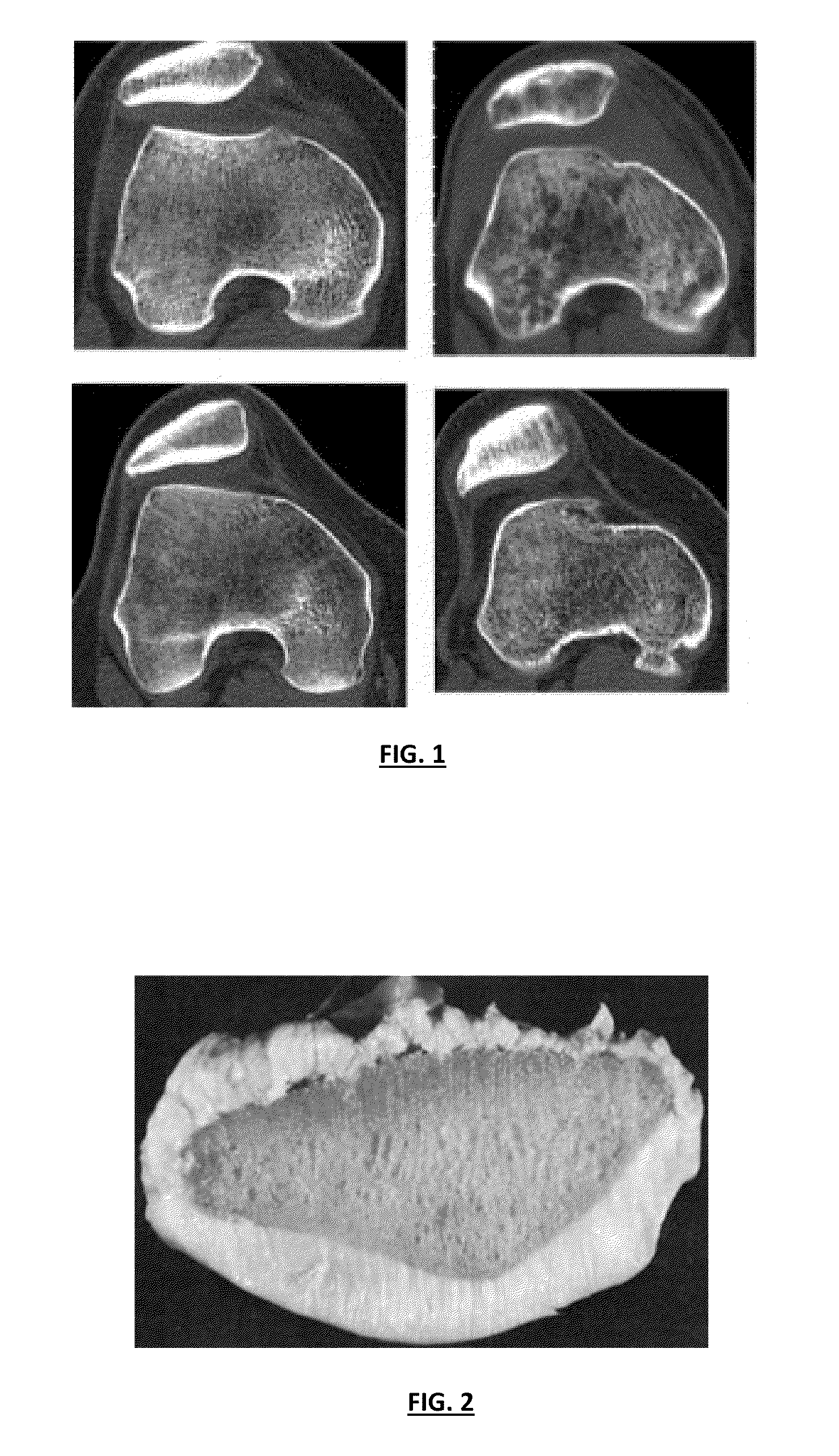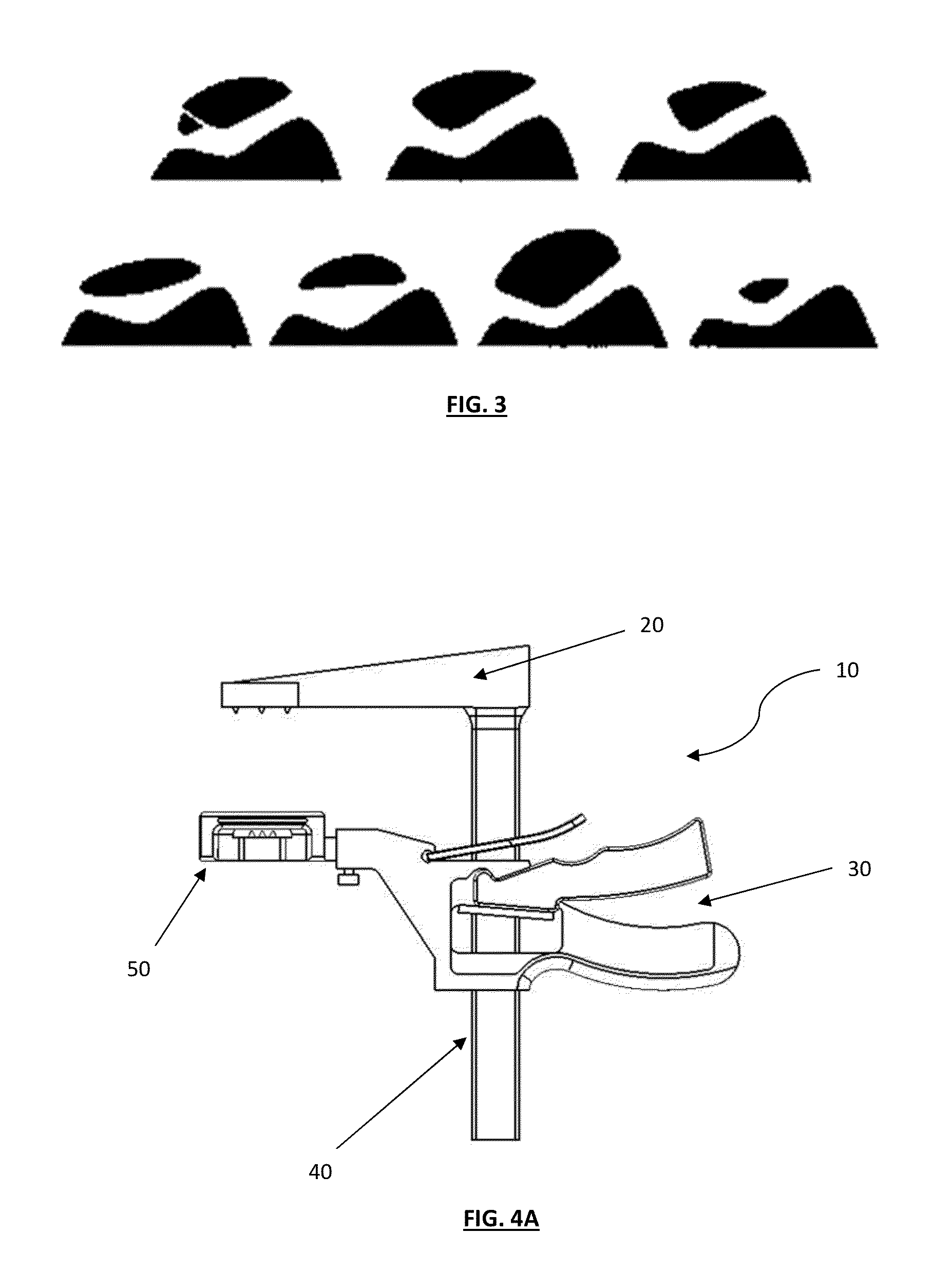Patella Resection Instrument Guide Having Optional Patient-Specific Features
a technology of instrument guide and patella, which is applied in the field of patella resection instrument guide, can solve the problems of reduced joint flexion, limited options for surgeons to resurface the underside of the patella, and inability to restore the knee to its normal function, and achieves the effect of convenient one-handed operation of the clamp
- Summary
- Abstract
- Description
- Claims
- Application Information
AI Technical Summary
Benefits of technology
Problems solved by technology
Method used
Image
Examples
Embodiment Construction
[0070]Imaging Techniques
[0071]Various features of the present invention may include the employment of a variety of imaging techniques that are suitable for measuring thickness, size, area, volume, width, perimeter and / or surface contours of the diseased patella. Such imaging techniques may be desirable to recreate natural or substantially similar natural surfaces and / or electronic image data thereof, facilitating the design and / or derivation of the specific patellar assembly to repair or replace the patella during surgery. Using the proper patellar assembly with specifically designed shaped and / or contoured patellar heads may significantly improve alignment of the tool and / or other surgical tools, thereby improving alignment of patellar features with the articular or implant surfaces and resulting joint congruity because of more accurate resection and placement of the patellar button. Poor alignment and poor joint congruity can, for example, lead to instability of the joint. In the ...
PUM
 Login to View More
Login to View More Abstract
Description
Claims
Application Information
 Login to View More
Login to View More - R&D
- Intellectual Property
- Life Sciences
- Materials
- Tech Scout
- Unparalleled Data Quality
- Higher Quality Content
- 60% Fewer Hallucinations
Browse by: Latest US Patents, China's latest patents, Technical Efficacy Thesaurus, Application Domain, Technology Topic, Popular Technical Reports.
© 2025 PatSnap. All rights reserved.Legal|Privacy policy|Modern Slavery Act Transparency Statement|Sitemap|About US| Contact US: help@patsnap.com



